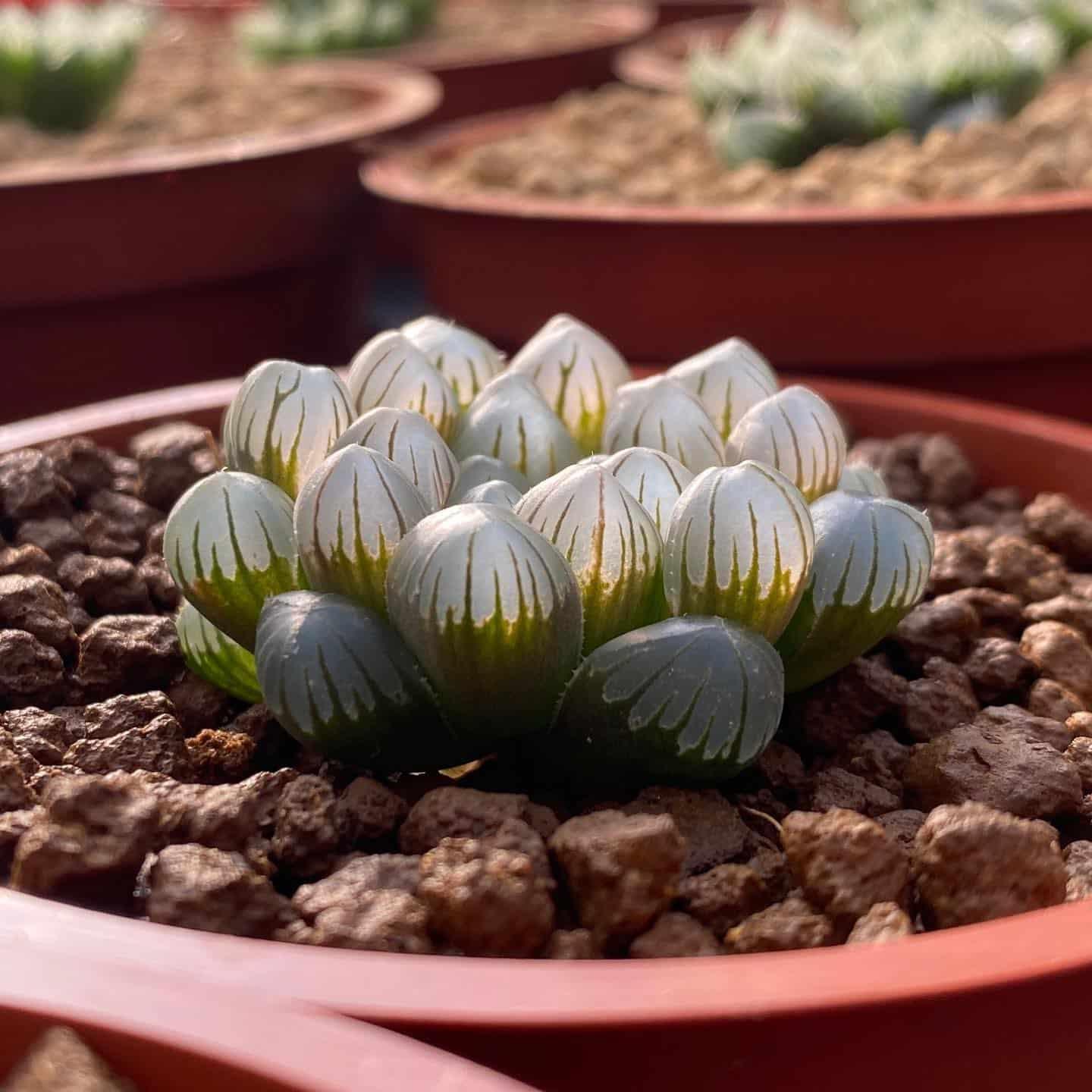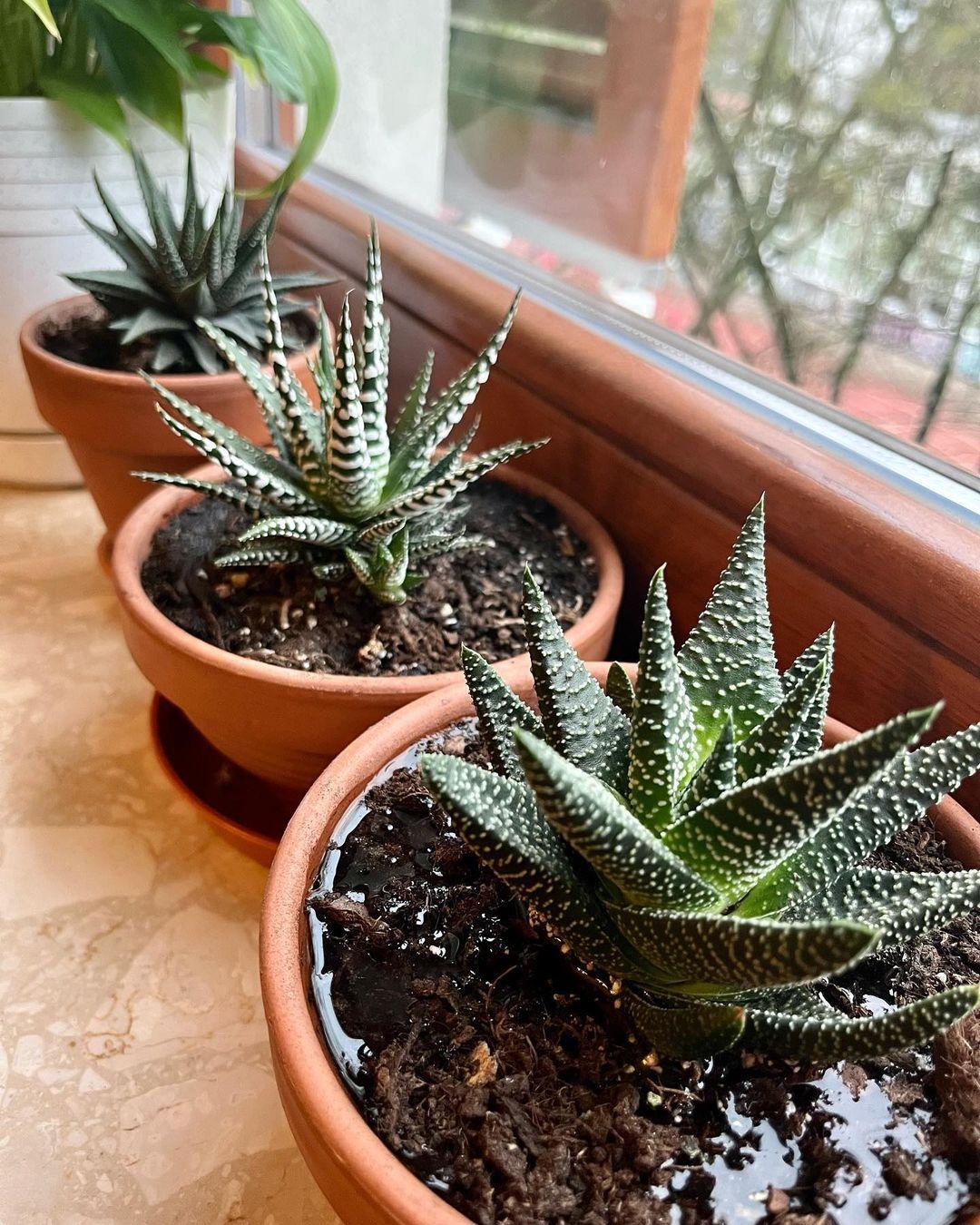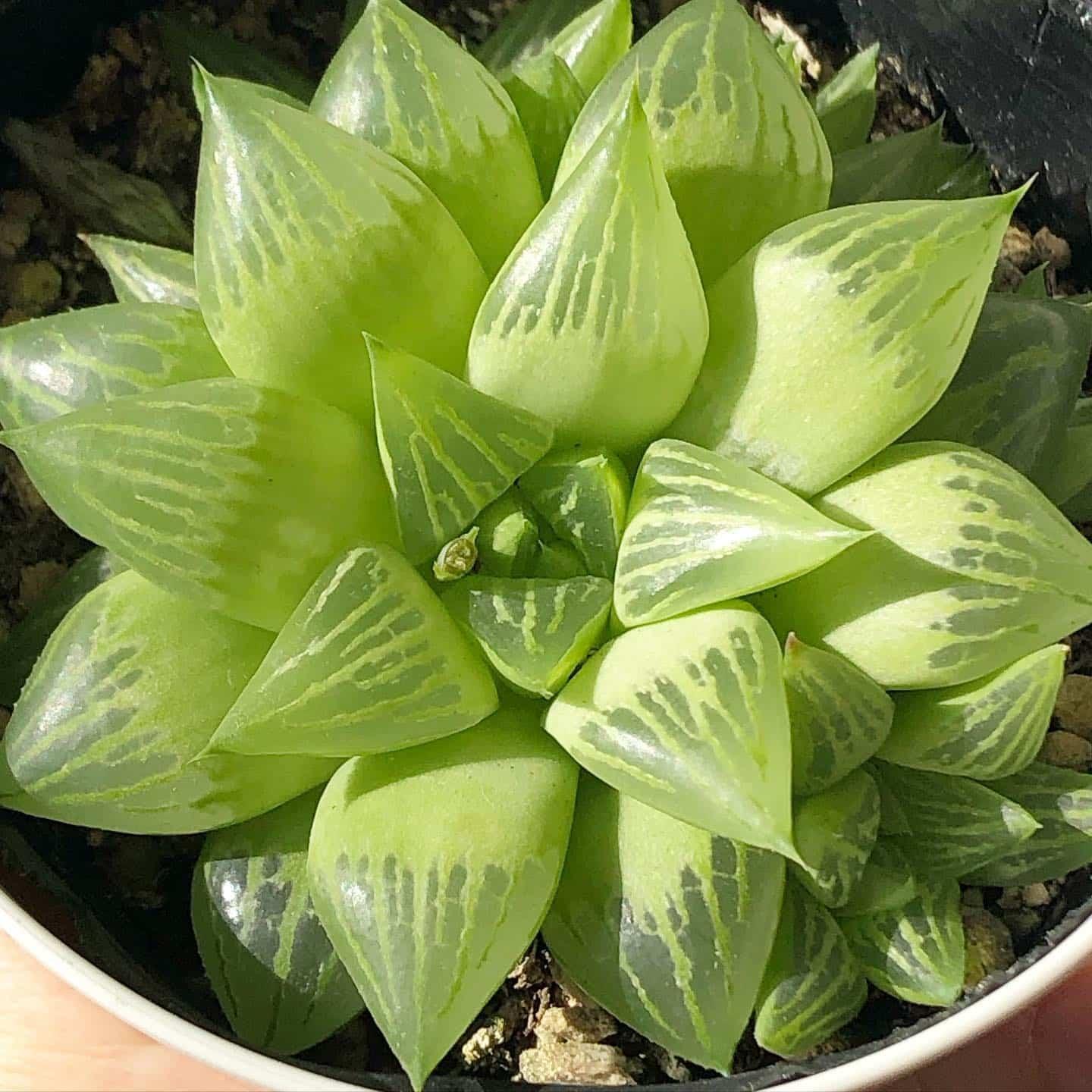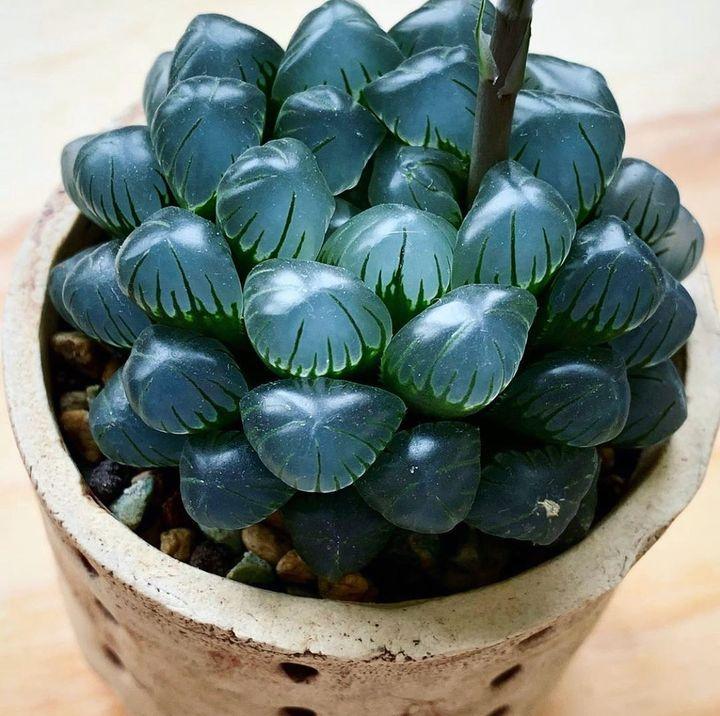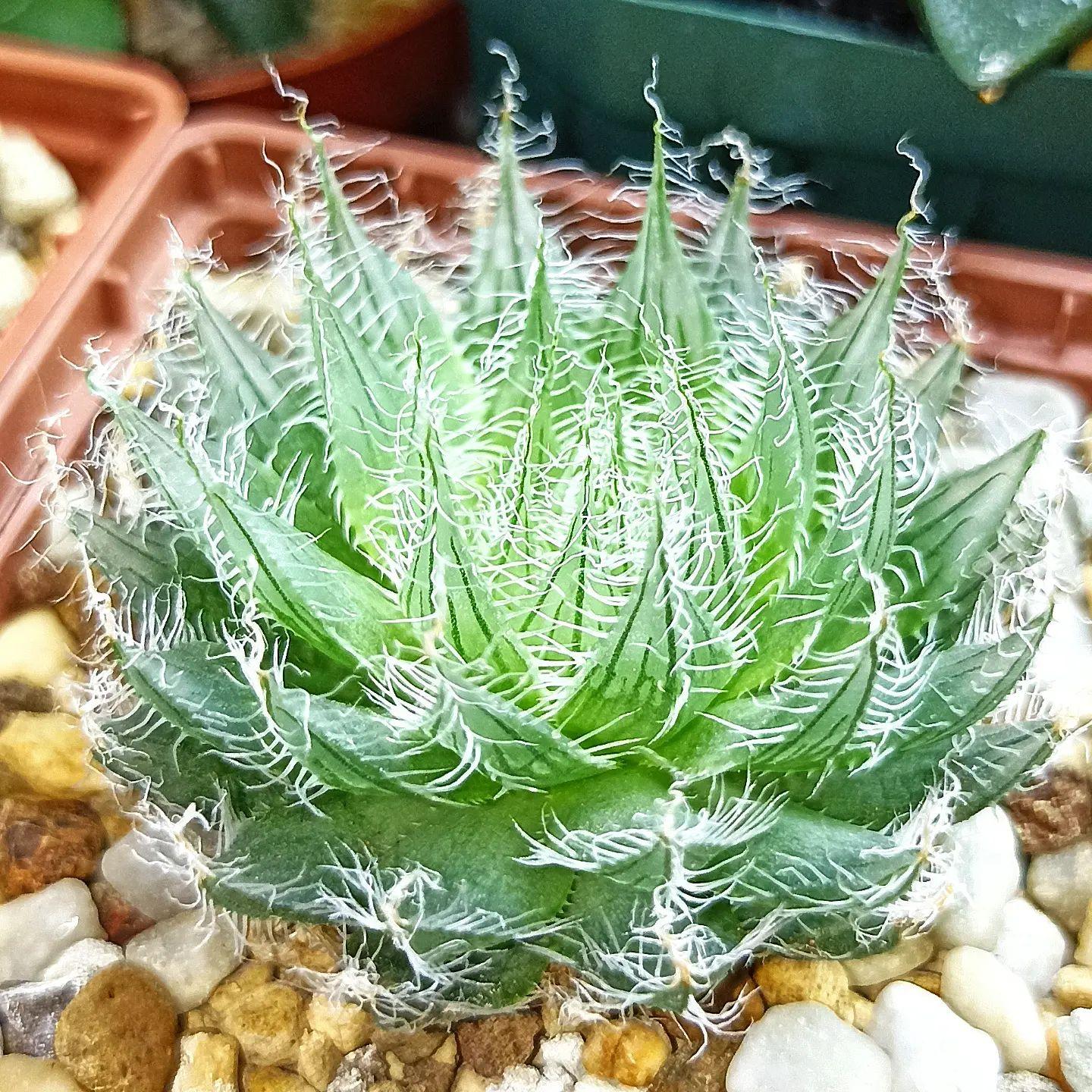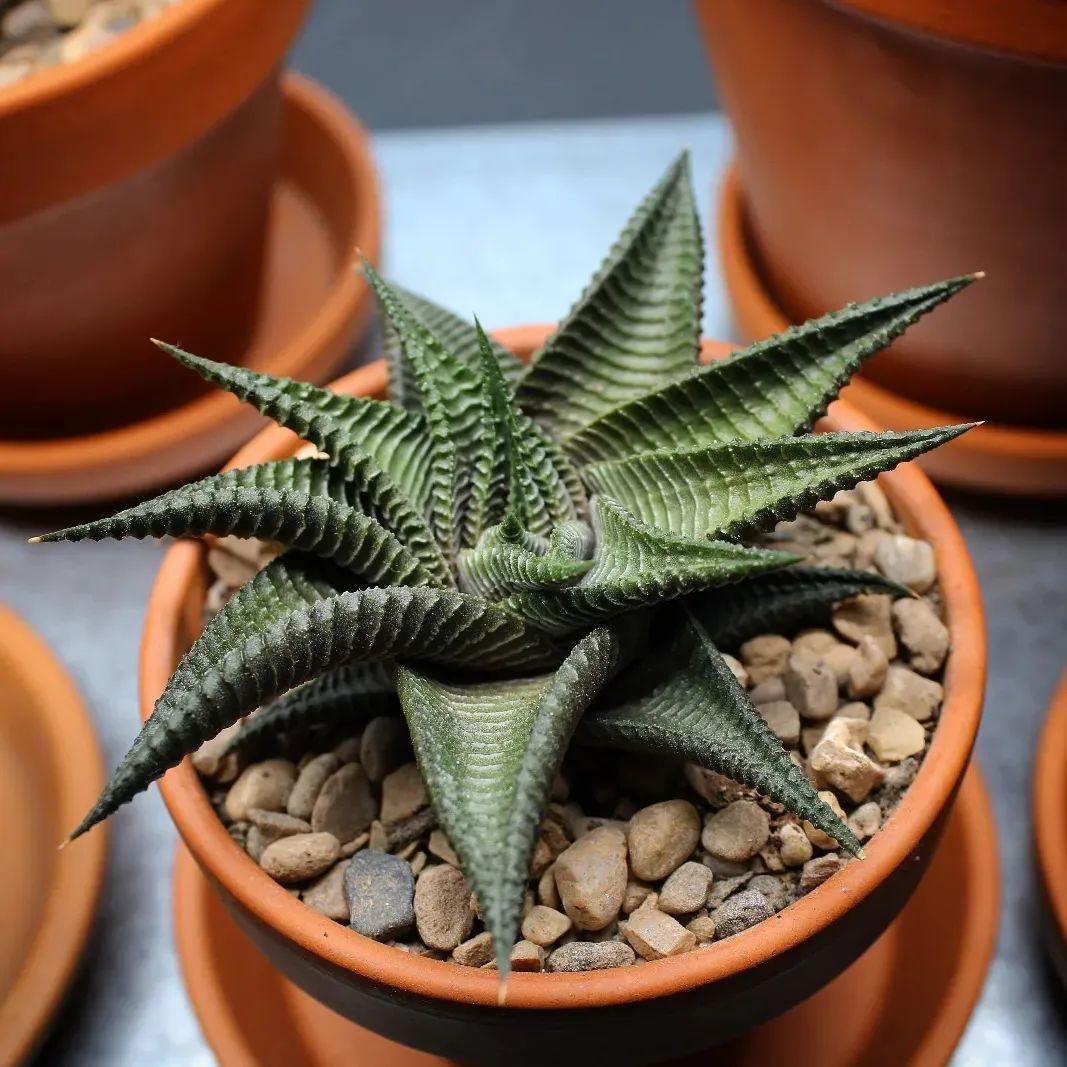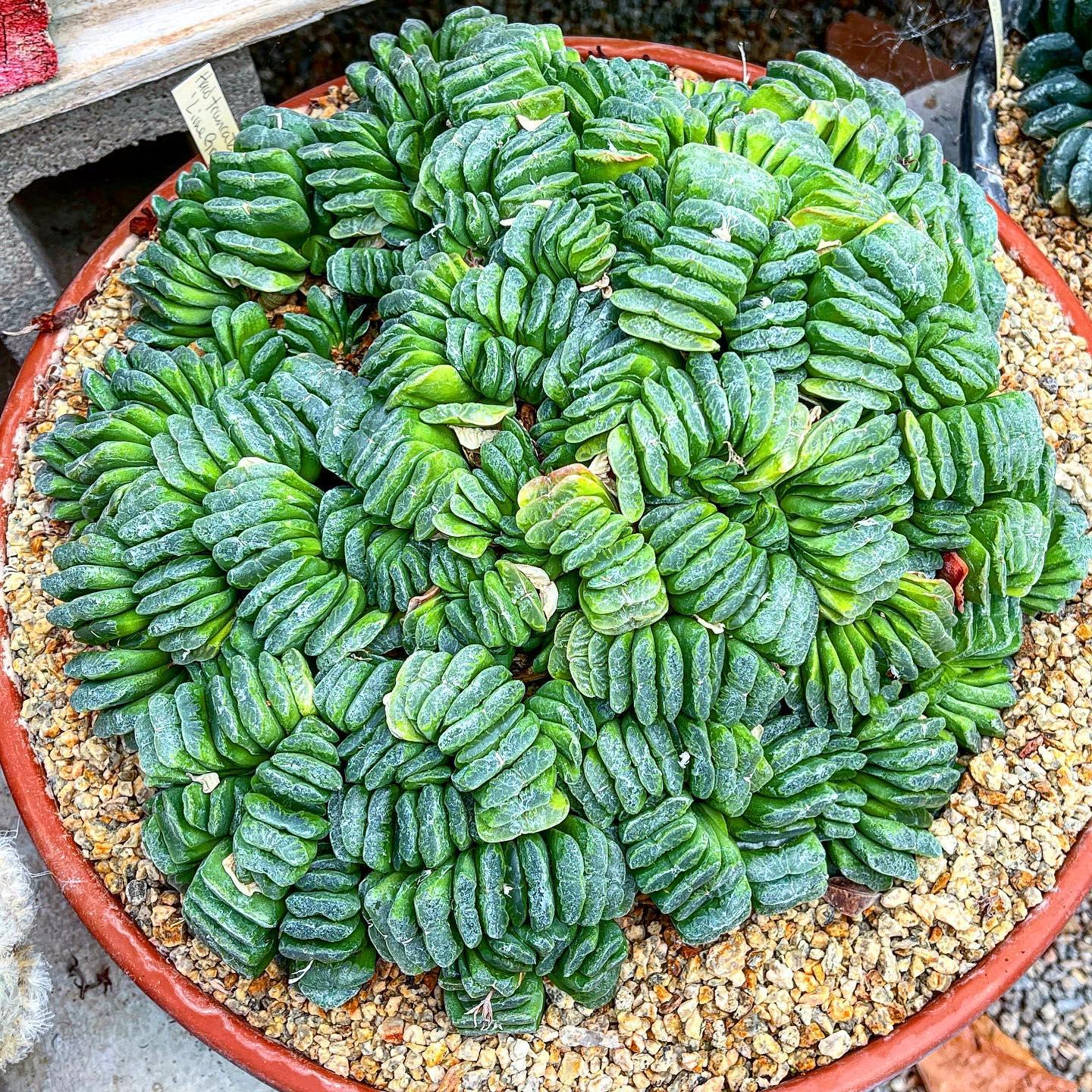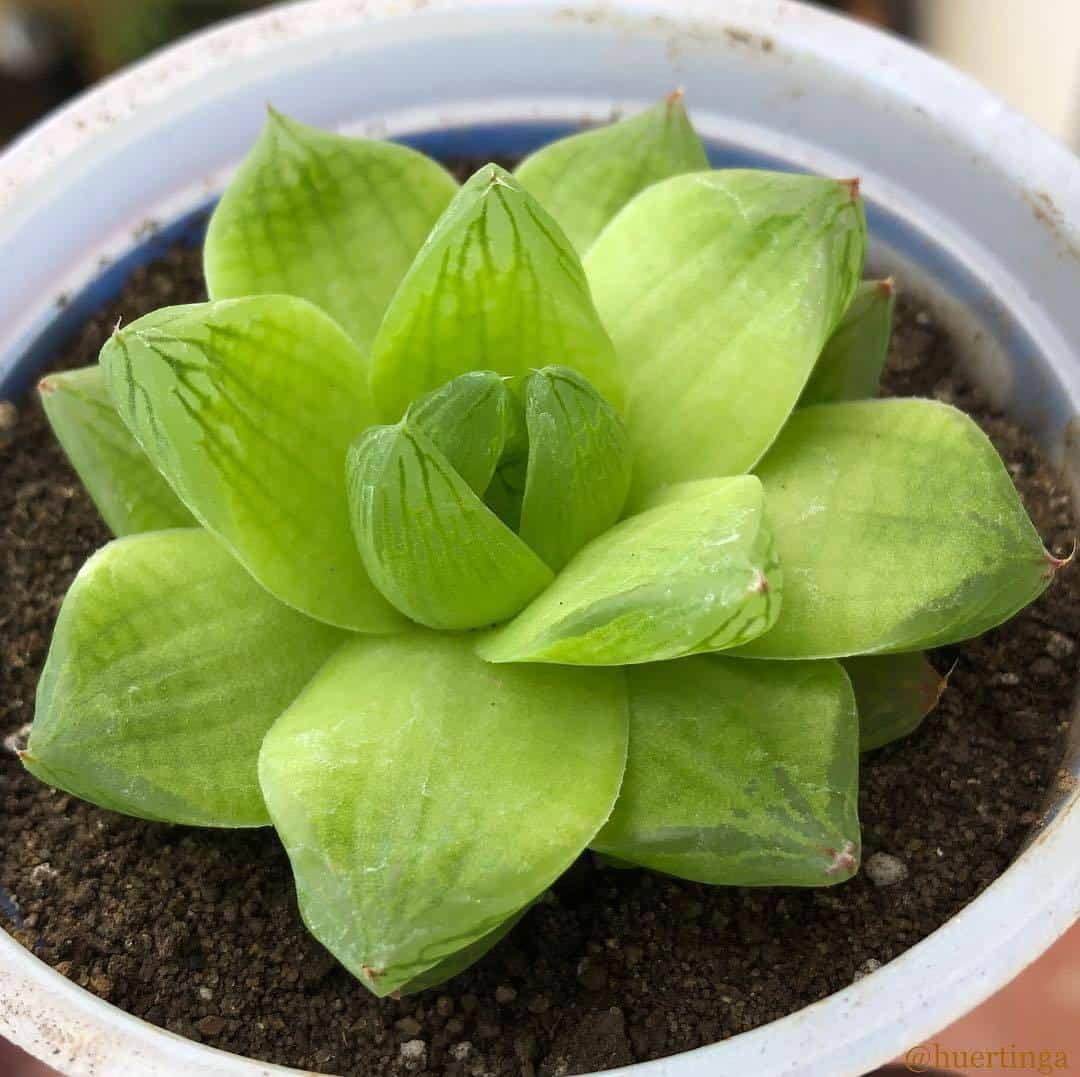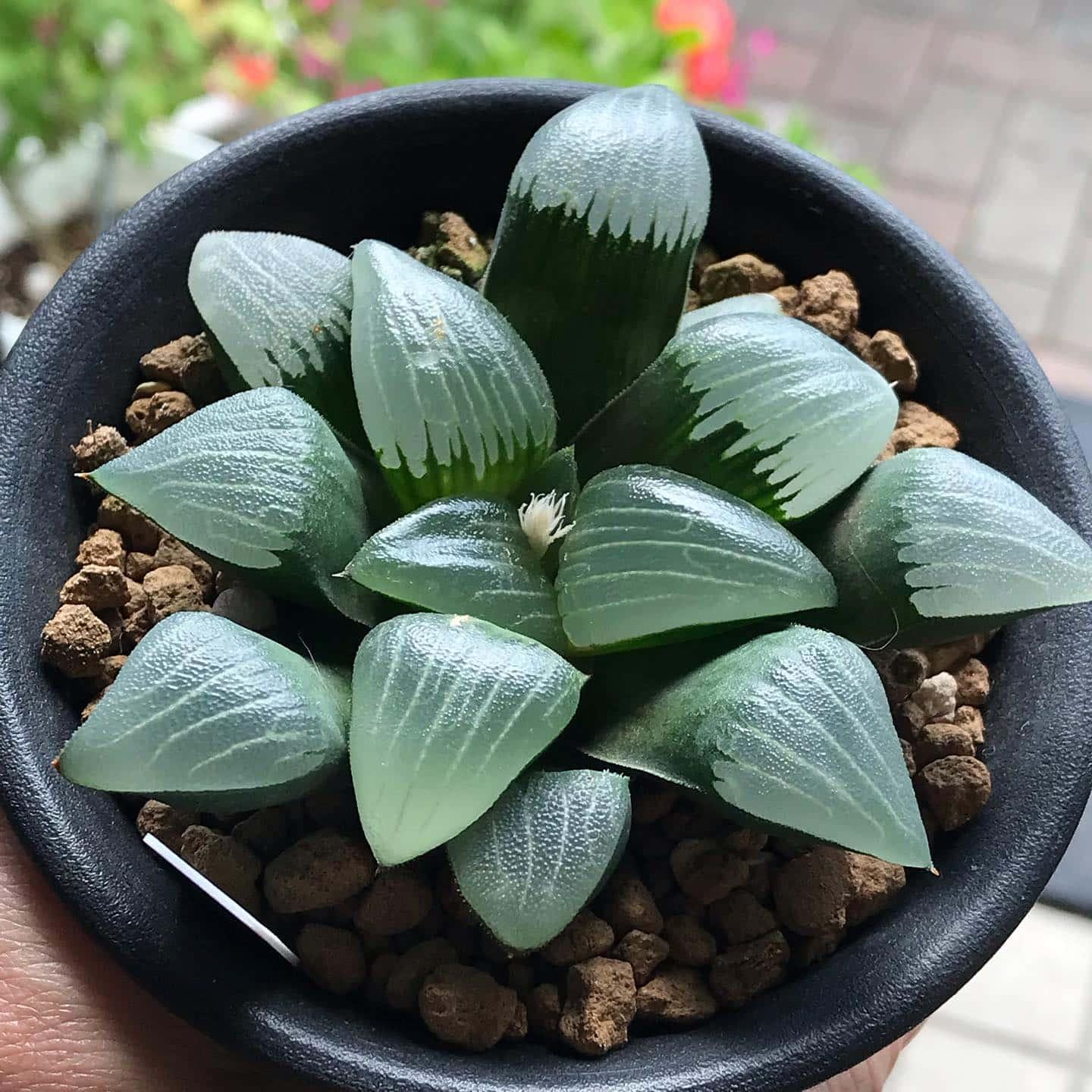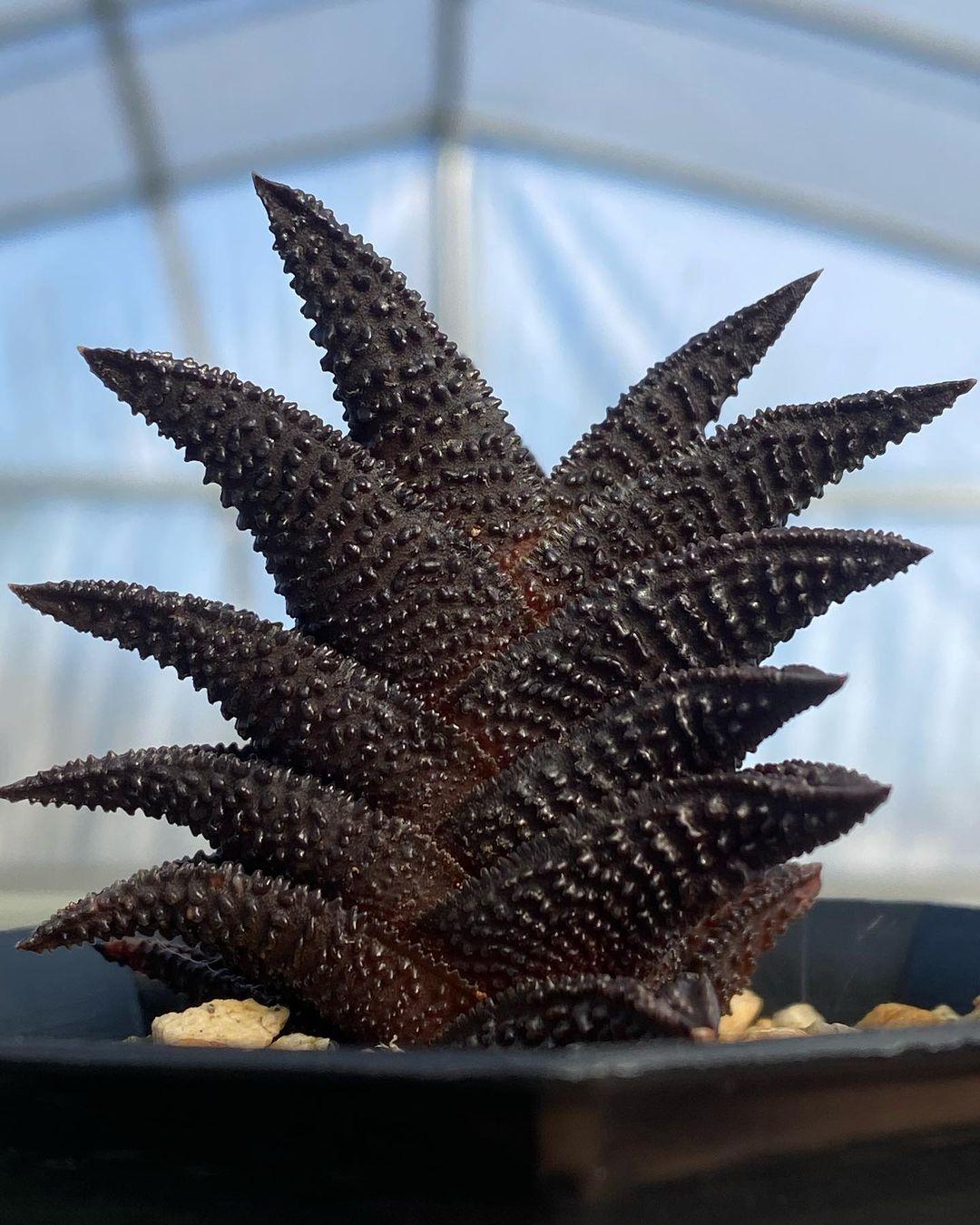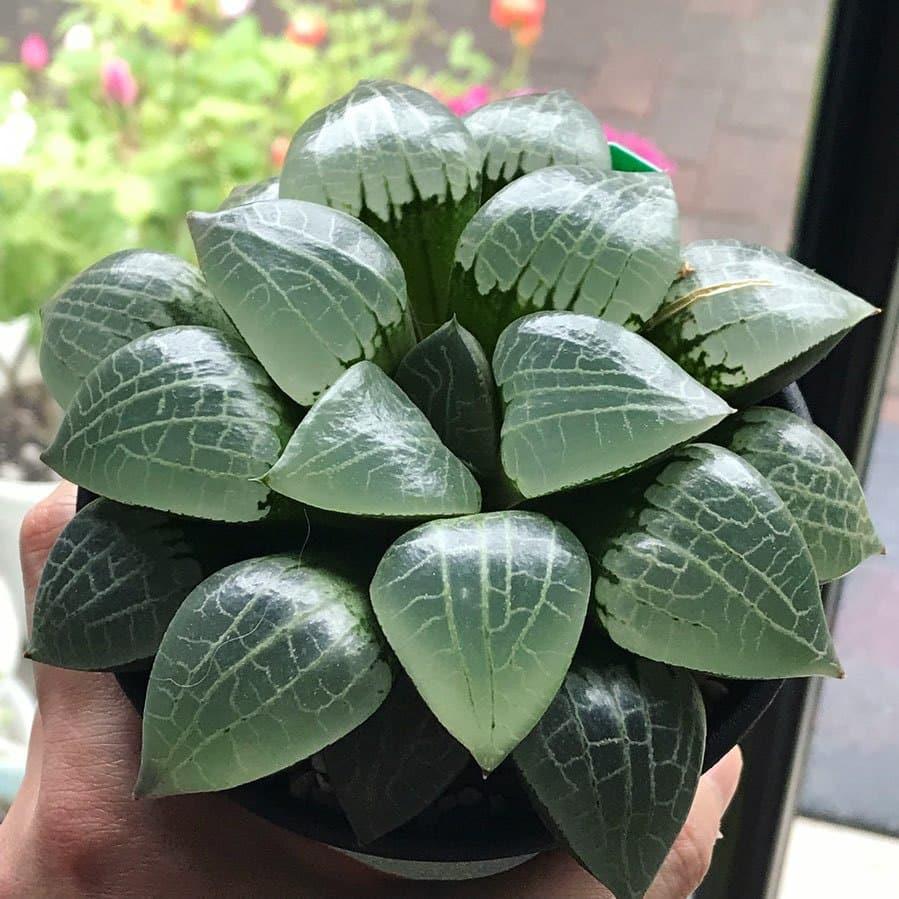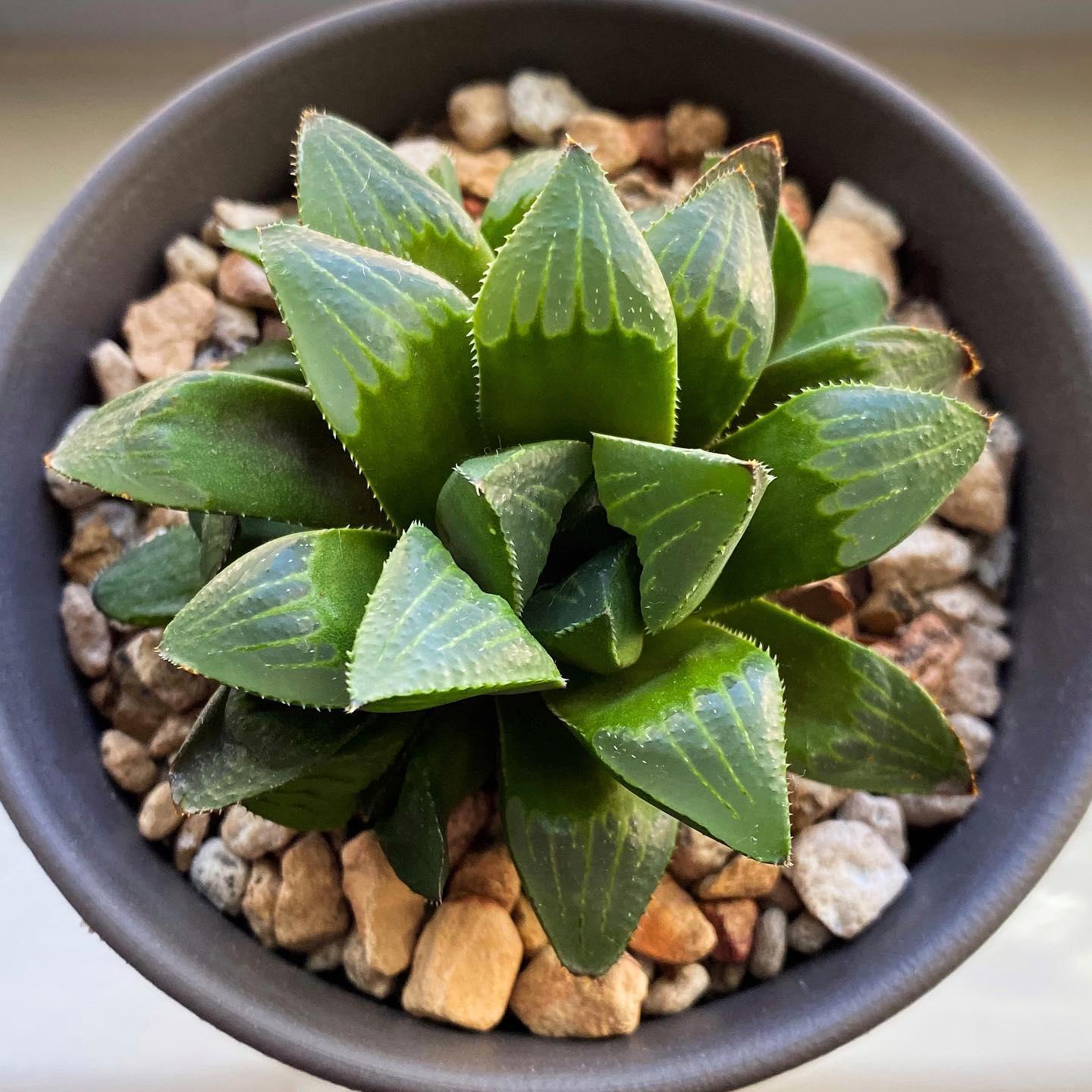Haworthia succulents are small and compact plants native to South Africa that have become popular among plant enthusiasts as indoor or outdoor decorative plants. With over 80 different types of Haworthia, each possessing its own unique physical attributes, these succulents offer a wide variety of options for plant lovers. Some of the more popular species include Haworthia Attenuata, Haworthia Cooperi, and Haworthia Fasciata.
Unique Attributes of Haworthia Succulents
Haworthia succulents are best known for their attractive rosettes of fleshy, pointed leaves. The leaves often have variegated patterns with white stripes or areas and can range in color from green to gray-green to brownish-green. Additionally, these plants produce small, tubular flowers on spikes that rise above the rosette.
Easy Care and Versatility
One of the reasons why Haworthia succulents are so popular is because they are easy to care for and can thrive in a variety of environments. They require well-draining soil, bright light, and moderate watering. Over-watering is the most common cause of death for these plants, so it is important to allow the soil to dry between waterings.
Haworthia succulents are also extremely versatile when it comes to their growing conditions. They can be grown in pots, dish gardens, or rock gardens. They make excellent additions to succulent displays or arrangements, both indoors and outdoors.
30 Popular Types of Haworthia Succulents
Here is a list of 30 popular species of Haworthia:
Haworthia Attenuata
Haworthia Attenuata is a small, slow-growing succulent characterized by its rosette of fleshy, green leaves with white, translucent stripes and a pointed tip. It is easy to care for and thrives in bright, indirect light and well-draining soil. This species is commonly used as a houseplant and is drought-tolerant.
Haworthia Cooperi
Haworthia Cooperi is a small succulent with green, fleshy leaves that have white stripes. It produces small white flowers during the summer. This species is known for its unique appearance and low maintenance requirements, making it a popular choice for indoor gardens. It prefers well-draining soil and bright, indirect light.
Haworthia Fasciata
Haworthia Fasciata, also known as the banded haworthia or zebra plant, is characterized by its rosette-forming leaves covered in white stripes and bands. The leaves are fleshy and grow up to 5 cm in length. This slow-growing plant is well-suited for indoor growing and is popular among succulent enthusiasts for its unique appearance and low maintenance requirements.
Haworthia Arachnoidea
Haworthia Arachnoidea, commonly known as the spider web haworthia, has green leaves with distinctive white web-like patterns. It grows in a rosette form and can reach up to 4 inches in height and 6 inches in width. This species prefers well-drained soil and partial shade. It is a popular choice for succulent gardens and can be grown both indoors and outdoors.
Haworthia Limifolia
Haworthia Limifolia is a small succulent with thick rosettes of fleshy, triangular leaves that have white, wavy stripes and clear tips. The leaves are often tinged with pink or red and are arranged in a spiral pattern. This species is drought-tolerant and can be grown in a variety of conditions, making it a popular choice for succulent gardens and rock gardens. It also produces delicate, star-shaped flowers in pink or white.
Haworthia Turgida
Haworthia Turgida is a succulent plant with rosette-shaped leaves that are typically green but can have a purple hue. The leaves are covered in small white bumps and are fleshy and hard to store water in the dry, arid regions where they grow. This species is popular in cultivation, treasured for its distinct appearance and ability to thrive in low-light conditions.
Haworthia Truncata
Haworthia Truncata is a slow-growing succulent with distinct fleshy leaves that are green and translucent, with a triangular shape. The leaves are arranged in a rosette pattern, and the plant produces small white flowers on tall spikes. This species is easy to care for and is popular among succulent lovers for its unique look and low upkeep requirements. It is suitable for both indoor and outdoor gardens.
Haworthia Cymbiformis
Haworthia Cymbiformis, also known as the boat-shaped haworthia, has boat-shaped rosettes and fleshy leaves with white, translucent windows. It grows in dense clusters and produces small white flowers on tall spikes in the summer. This slow-growing plant is well-suited for growing in pots or rock gardens. It requires minimal care and is drought-resistant.
Haworthia Reinwardtii
Haworthia Reinwardtii is a popular option for succulent collections and is frequently grown as a houseplant for its unique appearance and low maintenance requirements.
Haworthia Bayeri
Haworthia Bayeri is a slow-growing succulent with dark green leaves that have white stripes. It is often referred to as Bayer’s Haworthia and is a popular choice for indoor gardening due to its low maintenance and adaptability to a range of growing conditions. It can also be grown in pots, rock gardens, and as a ground cover in warmer climates.
Haworthia Nigra
Haworthia Nigra is a succulent plant with dark green leaves covered in black spines. The leaves have a translucent appearance and are often used as ornamental plants in gardens or as indoor potted plants. They require little upkeep and can survive under dim lighting. Haworthia Nigra is popular among succulent collectors and enthusiasts for its unique appearance and hardiness.
Haworthia Emelyae
Haworthia Emelyae is a slow-growing succulent that is part of the Asphodelaceae family. It is known as a “window plant” due to its translucent leaves that allow light to penetrate and photosynthesize within the plant. This species is popular for indoor or container gardens. It needs well-draining soil and minimal watering, thriving in bright, indirect light.
Haworthia Mirabilis
Haworthia Mirabilis is a small, rosette-forming succulent with green leaves that have white stripes and bumps. The leaves are arranged in a tight spiral, giving the plant a distinctive star-shaped appearance. This low-maintenance plant is well-suited for indoor gardening and can be easily propagated from offsets.
Haworthia Pygmaea
Haworthia Pygmaea is a succulent with fleshy, dark green leaves arranged in a rosette pattern. This slow-growing species is known for its distinct foliage and is an excellent choice for succulent collectors.
Haworthia Comptoniana
Haworthia Comptoniana is a succulent known for its attractive rosette-like foliage made up of fleshy, pointed leaves. This species is a popular choice for both indoor and outdoor succulent gardens due to its low maintenance requirements and its ability to store water in its leaves. It is highly prized for its aesthetic beauty and can be displayed as a specimen plant.
Haworthia Retusa
Haworthia Retusa is a succulent plant with rosette-shaped leaves that are green with white stripes and bumps. It is a slow-growing plant but highly valued for its distinct appearance and ease of care. It is often grown in pots or as a ground cover in rock gardens, and it is considered drought-tolerant and low-maintenance.
Haworthia Decipiens
Haworthia Decipiens is a type of succulent plant native to South Africa. It has fleshy green leaves covered in white dots and stripes. This species is known for its delicate and appealing look and is frequently used in landscaping and as a houseplant. The leaves retain water and provide a unique texture, making them a popular choice for succulent gardens and arrangements.
Haworthia Cuspidata
Haworthia Cuspidata is a succulent plant with fleshy green leaves that have sharp tips, giving the plant its cuspidata name. The leaves are often covered with white stripes, creating a lovely textured look. This species is drought-tolerant and can be grown in a variety of soils and lighting conditions, making it a popular choice for succulent gardens and collections.
Haworthia Margaritifera
Haworthia Margaritifera, also known as the “pearl plant,” has small white dots on its leaves that resemble pearls. The leaves are fleshy, triangular, and arranged in a rosette pattern. This slow-growing plant is drought-tolerant and flourishes in well-drained soil. It is a popular choice for rock gardens or meal gardens, adding a touch of beauty to any space.
Haworthia Scabra
Haworthia Scabra is a small succulent plant with pointed, green leaves that have white, flaky bumps on the surface. It is a low-maintenance plant that requires minimal watering and is well-suited for those who are new to gardening.
Haworthia Picta
Haworthia Picta is a small succulent plant with leaves patterned with white stripes and spots, giving it a unique appearance. The leaves are usually fleshy and have a rosette shape. It is a low-maintenance plant that is perfect for succulent enthusiasts and indoor gardening. With proper care, Haworthia Picta can grow up to 6 inches tall and live for several years.
Haworthia Obtusa
Haworthia Obtusa is a succulent plant with distinct, obtuse leaves that are fleshy and clear. The leaves are arranged in a rosette, and the plant produces small white flowers on long stalks. This slow-growing plant is well-suited for growing in containers, rock gardens, and as a houseplant. It is drought-tolerant and can survive in low-light conditions.
Haworthia Herbacea
Haworthia Herbacea is a small succulent plant commonly known as the “herbaceous haworthia” due to its thin, fragile leaves. The leaves are green with translucent windows that allow light to penetrate, aiding in photosynthesis. They are arranged in rosettes, and the plant produces small white flowers on spikes during the summer months. Haworthia Herbacea is easy to care for and often grown as a houseplant.
Haworthia Tessellata
Haworthia Tessellata is a succulent plant with little rosettes of triangular green leaves that have white speckles. This slow-growing plant is drought-tolerant and thrives in well-drained soil. It is frequently grown in containers and is a low-maintenance plant that requires very little care. Haworthia Tessellata adds a unique texture and visual interest to any outdoor or indoor space.
Haworthia Springbokvlakensis
Haworthia Springbokvlakensis is a small succulent native to South Africa. It has fleshy green leaves with unique white stripes. This species is treasured by succulent collectors for its decorative value and its ability to thrive in dry conditions. It is easy to care for and can be grown in containers or as a ground cover. Haworthia Springbokvlakensis is also known for its ability to produce offsets, making it a popular choice for sharing and propagating.
Haworthia Fasciata Variegata
Haworthia Fasciata Variegata is a succulent plant native to South Africa. It is a popular indoor plant due to its unique look, with leaves that have a distinct banded pattern and a translucent quality that allows light to enhance its vibrant colors. This slow-growing plant is easy to care for and requires minimal upkeep, making it a perfect choice for those who enjoy decorating their homes with greenery.
Haworthia Angustifolia
Haworthia Angustifolia is a slow-growing succulent with long, thin leaves that are green with white raised stripes. The plant has a rosette-like form, and the leaves are fleshy and arranged in a symmetrical pattern. This species is popular among succulent enthusiasts and is commonly grown as a houseplant due to its low maintenance requirements and attractive appearance. It can withstand low-light conditions and prolonged droughts.
Haworthia Maughanii
Haworthia Maughanii is a succulent plant with rosette-shaped leaves that are green with white raised stripes. The leaves are fleshy and arranged in a symmetrical pattern, making it an appealing addition to any succulent collection. This slow-growing species is easy to care for and can be propagated from offsets or leaf cuttings.
Haworthia Minima
Haworthia Minima is a small succulent known as the “mini-Haworthia.” It has round green leaves with white spots, giving them a distinct texture and visual appeal. This plant is perfect for small succulent gardens or terrariums and can be grown indoors. With proper care and adequate sunlight, Haworthia Minima can continue to grow and captivate those who admire it.
Haworthia Radula
Haworthia Radula is a slow-growing succulent with attractive, green leaves that have white stripes. The leaves are arranged in a rosette pattern, and the plant produces small white flowers on tall stalks. This low-maintenance succulent requires well-draining soil, bright indirect light, and infrequent watering. It is a long-lasting addition to any collection of succulents.
How to Grow and Care for Haworthia Succulents
Haworthia succulents are low-maintenance, drought-tolerant plants native to South Africa. They are easy to care for and can be grown both indoors and outdoors. Here are the steps for growing and caring for Haworthia succulents:
-
Light: Haworthia succulents prefer bright, indirect light but can also tolerate low-light conditions. If growing indoors, place them near a window that receives bright, indirect light or use artificial light.
-
Soil: Use a well-draining succulent potting mix that is rich in organic matter. You can also create your own soil mix using equal parts sand, peat moss, and potting soil.
-
Water: Water Haworthia succulents sparingly, only when the soil is completely dry. Overwatering can lead to root rot and harm the plant.
-
Temperature: Haworthia succulents prefer warm temperatures and thrive in a range of 55 to 85 °F.
-
Humidity: Haworthia succulents do not require high humidity levels and can withstand typical home humidity levels.
-
Fertilizer: Fertilize Haworthia succulents once a month with a succulent fertilizer during the growing season (spring to fall). Avoid fertilizing during the winter.
-
Repotting: Repot Haworthia succulents every 2-3 years or when they have outgrown their current pot. Choose a pot that is slightly larger than the previous one and has a well-draining bottom.
-
Propagation: Haworthia succulents can be propagated easily from leaves or offsets. Simply remove the offsets from the parent plant, let them dry for a few days, and then plant them in pots filled with well-draining soil.
By following these steps, you can easily care for and grow Haworthia succulents and enjoy their unique appearance and low-maintenance nature.
How to Propagate Haworthia Succulents
-
Start with a fully grown plant: Begin with a healthy and fully grown Haworthia plant that has been well-established in a pot for a few years.
-
Choose the correct time: The best time to propagate Haworthia succulents is in the spring or summer when the plant is actively growing.
-
Cut off offsets: Look for small plants growing around the base of the mother plant. These offsets, also known as pups, can be carefully cut off with a sharp, sanitized knife.
-
Let the offsets dry: Allow the cut offsets to dry out for a day or two to prevent rot and promote healing.
-
Prepare the soil: Use a well-draining cactus or succulent soil mix.
-
Plant the offsets: Plant the offsets into the soil, ensuring they are firmly in place and that the roots are covered. Water the offsets lightly, but avoid over-watering.
-
Provide proper care: Place the newly potted offsets in bright, indirect light. Water them moderately, enough to keep the soil slightly moist. Avoid over-watering, as Haworthia succulents are prone to root rot.
-
Wait for growth: It may take several weeks or months for the offsets to start growing. Be patient and continue to provide proper care.
-
Transplant: Once the offsets have grown a few inches tall and have developed roots, transplant them into individual pots for further growth and development.
Top 5 FAQ and Answers for Haworthia Succulents
-
Q: What is a Haworthia succulent?
A: Haworthia succulents are small, slow-growing plants native to South Africa. They have fleshy leaves often patterned with bumps or stripes and produce small, star-shaped flowers. -
Q: How do I care for my Haworthia succulent?
A: Haworthia succulents prefer bright, indirect light and well-draining soil. They should be watered moderately and allowed to dry completely between waterings. Ideal temperatures range from 55 to 85 °F. -
Q: Why are my Haworthia succulent leaves turning yellow?
A: Yellowing leaves can be a sign of overwatering or poor drainage. Make sure you allow the soil to dry completely between waterings and consider using a well-draining potting mix. -
Q: Can Haworthia succulents be propagated?
A: Yes, Haworthia succulents can be propagated by division or by removing offsets (small plantlets that grow from the base of the parent plant) and potting them separately. -
Q: Do Haworthia succulents produce flowers?
A: Yes, Haworthia succulents produce small, star-shaped flowers that are typically white or pink. They usually bloom in late winter or early spring.
Top 10 Interesting Facts About Haworthia Succulents
-
Haworthia succulents are native to South Africa.
-
The species is named after the botanist Adrian Hardy Haworth.
-
Haworthia succulents are known for their unique, textured leaves that resemble aloe vera.
-
They have a slow growth rate and can reach a height of 3-5 inches.
-
Haworthia succulents are part of the Asphodelaceae family, which also includes Aloe and Gasteria.
-
These succulents can store water in their leaves, allowing them to survive long periods of drought.
-
Haworthia succulents come in a variety of colors, including green, white, and red.
-
The plants are often used in rock gardens and are popular for their low maintenance and easy care.
-
Haworthia succulents are propagated through offsets or leaves.
-
In addition to being used as ornamental plants, Haworthia succulents are also used in traditional medicine for their medicinal properties, such as treating wounds and promoting healing.

